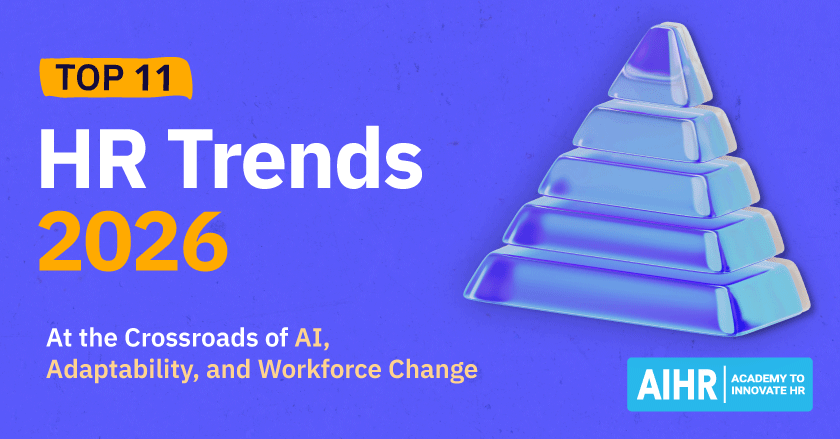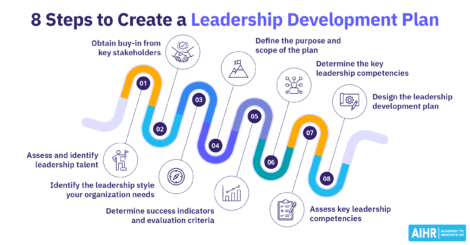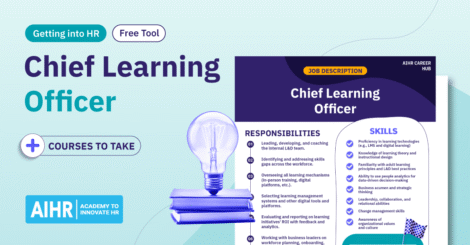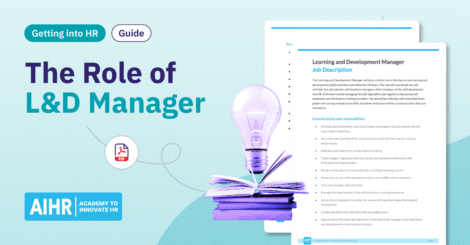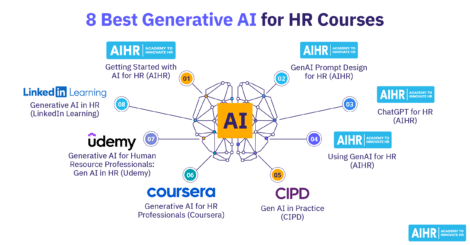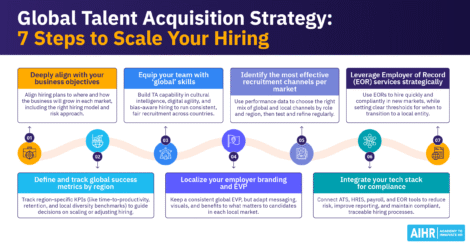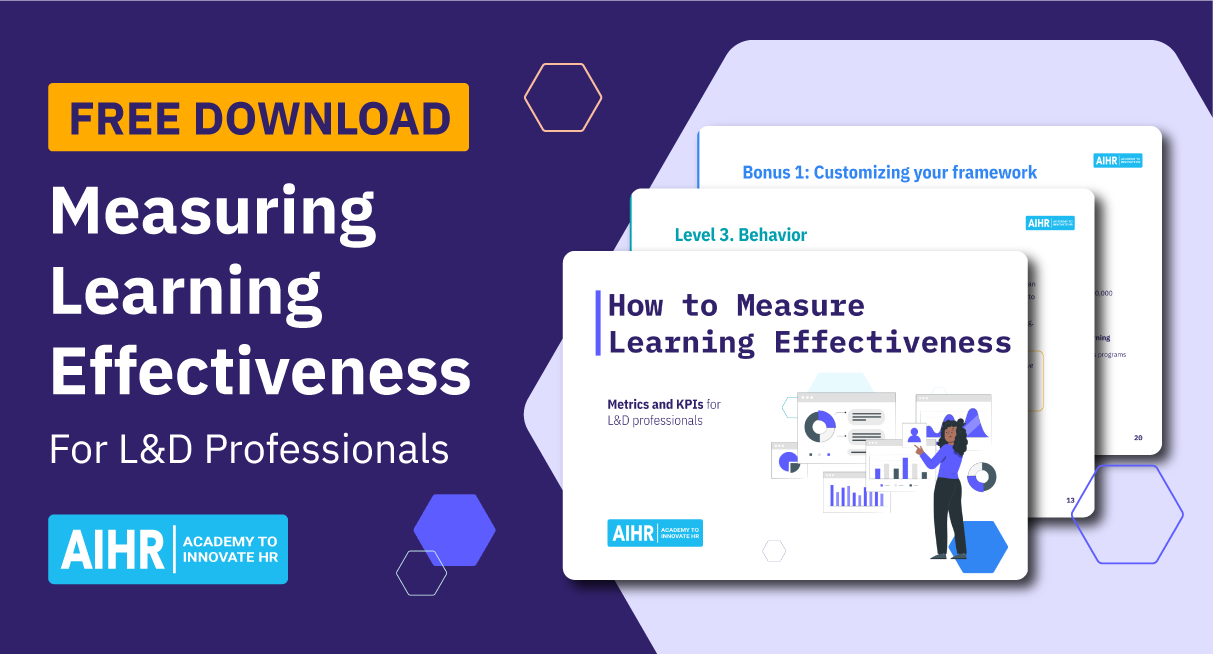Learning and development (L&D) has never been more critical than in this era of constant change. Organizations are under relentless pressure to transform quickly in response to shifting markets, emerging technologies, and economic uncertainty. At the same time, employees are raising their expectations. They no longer want training that simply ticks compliance boxes; they want growth opportunities that are relevant, flexible, and clearly tied to their career progression.
This dual pressure — external transformation and internal demand — means L&D is now a cornerstone of business resilience. Whether it’s closing persistent skills gaps, preparing for AI’s impact, or improving retention in competitive labor markets, the strength of an organization’s L&D strategy directly affects its ability to compete and adapt.
Over a third of skills are expected to be outdated by 2030, and more than six in 10 employers see skills shortages as the biggest barrier to business transformation. At the same time, career development is now one of the strongest retention levers. In other words, companies that direct their efforts at strategically developing employees will win.
Let’s explore learning and development statistics HR and L&D professionals need to know to move ahead.
Contents
The current state of L&D
The looming skills gap
Reskilling and upskilling for the future
Learning and development in a remote setting
Training expenditure and cost
The current state of L&D
Learning and development has become a key part of business strategy. Organizations now see learning as a driver of performance, innovation, and employee retention rather than an isolated HR activity. As technology reshapes roles and new skills become essential, executives are investing in programs that build long-term capabilities and keep their workforce adaptable.
- 90% of L&D budgets stayed the same or increased compared to the previous year.
This demonstrates a fundamental shift as learning is no longer treated as a discretionary cost. Even in uncertain times, executives are ring-fencing or expanding budgets. For HR, this is both an opportunity and a challenge. You have the resources to design impactful programs, but also more pressure to show that learning supports business goals and retention.
- 94% of learning leaders say digital learning is critical to strategy.
Digital learning is now part of the organizational backbone. The issue has moved from whether to adopt it to how to design it effectively. For HR leaders, this means focusing on learner experience, accessibility, and measurable outcomes, ensuring digital platforms support both flexibility and engagement.
- 53% of L&D professionals cite economic uncertainty and rising costs as top issues.
Even with stable budgets, cost pressure shapes decision-making. HR leaders need to prove ROI and prioritize programs that directly support productivity, retention, and capability building. This makes evaluation frameworks and business alignment essential for every program launched.
- 41% of training providers report renewed interest in classroom learning.
After years of digital-first delivery, learners are asking for more in-person experiences. This doesn’t mean abandoning digital – it means blending it with face-to-face sessions that build deeper skills and human connection. For HR, this requires redesigning delivery models around flexibility, not one-size-fits-all.
- 87% of L&D leaders feel under-equipped to meet their annual priorities.
The function itself faces capability gaps. Leaders are struggling with data analytics, AI, and instructional design at scale. Investing in upskilling the L&D team is now as important as training employees — without it, the function risks under-delivering on its growing mandate.
- 65% of L&D leaders say learner engagement is their top goal.
Engagement has become the true measure of success. Completion rates aren’t enough. HR teams need to create learning experiences that are motivating, relevant, and aligned with personal growth as well as business needs.
→ Takeaway: L&D has earned its seat at the table. The next step is to translate budgets and strategies into measurable impact, balancing digital scale with the value of human connection.
Become an L&D professional with impact
The numbers are clear. Organizations are investing more in learning, but results depend on how well L&D is designed and delivered. If you’re ready to lead learning initiatives that truly make a difference, it’s time to level up your skills.
AIHR Learning & Development Certificate Program empowers you to:
✅ Translate learning needs into effective, outcomes-driven programs
✅ Align L&D initiatives with employee growth and business strategy
✅ Apply instructional design principles and best practices
✅ Use data to evaluate and improve learning effectiveness
🎓 Build the skills to deliver learning that works and proves its value.
The looming skills gap
The skills gap is now one of the biggest challenges organizations face. Employers recognize that without the right skills, transformation plans stall and competitiveness declines. For HR, this presents both a risk and an opportunity. The risk is clear: outdated skills threaten productivity and innovation.
The opportunity lies in building structured, long-term strategies that prepare people for the future. These statistics show how urgent the challenge has become and why skills planning is now at the heart of business resilience.
- 63% of employers see skills gaps as the biggest barrier to transformation.
Skills shortages are now considered a strategic risk. This elevates HR’s role in building workforce strategies that ensure business continuity and competitiveness.
- By 2030, 39% of today’s skills will be outdated.
Almost four in ten skills in use today will no longer be relevant within five years. This underlines the need for continuous learning and structured upskilling pathways.
- In the last three years, 32% of the skills needed for the average job have changed.
Keeping skills current is now essential for both individual and organizational success.
- 85% of employers say upskilling is a top five-year priority.
Employers recognize that external hiring alone won’t close the gap. Building talent internally through deliberate upskilling is now essential to stay competitive.
- By 2030, 59 out of 100 workers will need training: 29 in-role upskilling, 19 redeployment, 11 at risk.
This breakdown shows that HR must prepare for multiple pathways. Some workers will reskill into new roles, some will adapt within their current roles, and others may need career transition support.
- 49% of executives worry their workforce lacks the skills to deliver strategy.
Skills are now a board-level concern. HR leaders can use this attention to secure investment, but must also deliver visible outcomes.
- 78% of business leaders identify the skills gap as a major risk factor.
This highlights how skills are now seen as a form of business currency. Organizations that fail to address the gap risk losing market share and innovation capacity.
- Only 50% of HR teams believe they have the right skills to deliver impact.
This shows that many HR teams face their own skill gaps and will need targeted development to deliver the level of impact their organizations expect.
- Just 39% of HR professionals feel confident in using digital tools.
With digital platforms now central to learning delivery, analytics, and engagement, this low confidence suggests a major obstacle. HR professionals need stronger digital skills to design, manage, and measure effective L&D initiatives.
→ Takeaway: The skills gap is an organizational risk. HR’s role is to design and implement long-term, structured, and measurable skills pathways, including for their own function.
Reskilling and upskilling for the future
Reskilling and upskilling are not simply about protecting jobs. These initiatives have become drivers of growth and innovation. Companies that invest in career development create more agile and adaptable workforces, which in turn helps them adopt new technologies more effectively. Employees also benefit by seeing clearer pathways for advancement, which increases loyalty and reduces attrition.
The following statistics illustrate how reskilling and upskilling have evolved into a strategic advantage and why HR leaders need to embed them deeply into talent strategies.
- Organizations with strong career development programs are 42% more likely to be AI frontrunners.
Career development enables agility. Employees with access to growth opportunities are more adaptable, making organizations better positioned to adopt new technologies.
- Only 36% of organizations qualify as “career development champions”.
The majority are missing out on a proven advantage. Companies that fail to prioritize career growth risk higher turnover and slower transformation.
- 71% of career champions are confident in attracting talent, versus 58% of others.
Development opportunities enhance employer branding. Talented professionals want to join companies that support long-term career growth.
- 67% of career champions are confident in retention, versus 50% of others.
Retention improves dramatically when employees see a future within the company. Career pathways directly reduce attrition risk.
- AI-related course enrollments grew 195% year-over-year.
Employees are hungry for AI knowledge, but many organizations still lag in providing structured programs. Meeting this demand is essential for competitiveness.
- 50% of workers have already completed training, upskilling, or reskilling in the past three years.
This indicates that learning has become a core part of work itself. Half of the workforce is already engaging in training or development, showing that continuous learning is an expected part of career growth.
→ Takeaway: Organizations that prioritize reskilling and upskilling will attract and retain talent, accelerate innovation and AI adoption, and grow their business.
Learning and development in a remote setting
Hybrid and remote work have permanently changed how people learn. Employees expect training to be flexible, relevant, and easy to access, while still offering the human connection that builds collaboration and culture. This shift has raised the stakes for HR leaders, who must design learning experiences that are engaging and simple to use across digital and in-person channels.
The statistics highlight the challenges and opportunities of remote learning and explain why the future lies in blended, learner-centered approaches.
- 81% of new hires feel overwhelmed by digital onboarding tools.
Overly complex onboarding tools frustrate employees and slow down engagement. Simplifying the digital learning journey is crucial for retention and early productivity.
- 29% of learners want podcasts in their training mix, but only 9% of traning providers deliver them.
There is a clear gap between learner preferences and provider offerings. Expanding into podcast and microlearning formats can boost flexibility and engagement.
- 64% of employees participated in e-learning, and 56% in live virtual training in the past year.
While in-person classroom training remains the most common training delivery method, digital formats continue to be an important part of the training mix.
- 46% of professionals spend 1–4 hours per month learning independently.
Employees are taking ownership of their learning, but ad hoc approaches won’t close organizational gaps. HR needs to provide structured pathways that channel self-directed energy into strategic outcomes.
- Gamified training boosted engagement to 91% at Leon UK.
Gamification is proving effective at sustaining engagement. Case studies show that playful elements keep learners motivated and improve knowledge retention.
- 28% of companies cite technology as their biggest hurdle in remote learning.
Access, bandwidth, and usability issues remain a challenge. HR leaders must work closely with IT to reduce friction points and ensure equitable access to learning.
→ Takeaway: Employees want clarity, variety, and relevance. HR must design blended strategies that simplify tools, expand formats, and ensure equitable access.
Training expenditure and cost
As we’ve mentioned above, budgets for learning are holding steady, but expectations are increasing. L&D is no longer judged by how many employees complete a course. It is evaluated on whether it helps organizations stay competitive, retain talent, and adapt to change. This shift places new standards on HR and L&D leaders. They must demonstrate not only that people are learning, but also that learning is translating into measurable business outcomes.
For many organizations, this means moving from “activity metrics” like participation rates to real performance indicators such as productivity, engagement, and internal mobility.
- Delegate satisfaction remains the top KPI for training providers.
While satisfaction matters, it does not demonstrate long-term value. HR must move beyond satisfaction metrics to track skill application and business impact.
- Only 29% of L&D leaders feel confident proving ROI.
This credibility gap makes it difficult to secure further investment. Building robust ROI frameworks is a priority for the profession.
- Organizations that are career development champions measure success with internal mobility and skills delivered.
Tracking how employees move into new roles and apply skills is a more meaningful measure of success than completion rates alone.
- Skills validation is now as important as skills development.
Employers are demanding evidence that skills are applied, not just learned. This is driving adoption of skills assessments and digital badges.
- 82% of L&D functions are tasked with fostering lifelong learning.
This reflects a strategic shift. Companies are embedding learning cultures to remain resilient amid constant disruption.
- Training spend by large U.S. companies rose 24% despite cuts elsewhere.
This reinforces the message that learning is now seen as a critical investment. Even in tight economic conditions, training budgets are expanding.
→ Takeaway: Proving value is the next frontier. HR must link training outcomes to productivity, mobility, and revenue to secure long-term support.
Over to you
The L&D profession should expect to be both challenged and empowered in the reality that lies ahead. Employees want career-focused and flexible learning that supports their growth, while executives expect clear evidence that training drives transformation and delivers business impact. Meeting that challenge requires a sharper focus on impact, creativity in delivery, and a stronger role in shaping the workforce of the future.
The path forward is clear:
- Treat skills as a strategic currency: Build skills taxonomies, invest in future-critical capabilities, and make skills the language of talent discussions.
- Connect reskilling to retention and career pathways: Show employees how learning leads to advancement and security, turning development into a reason to stay.
- Balance digital scalability with the value of in-person learning: Blend formats to give learners both flexibility and connection.
- Invest in the HR and L&D function’s own skills: Build expertise in digital learning design, data, and AI so the function can deliver on its promises.
- Move beyond satisfaction to business metrics: Measure success in terms of productivity, performance, and mobility rather than participation alone.
The organizations that will thrive are those that see learning as the engine of resilience, adaptability, growth and innovation. Treating L&D as a cost center will only hold companies back. The research signals where the profession is heading and provides a roadmap for how to build a workforce that is truly future-ready.


